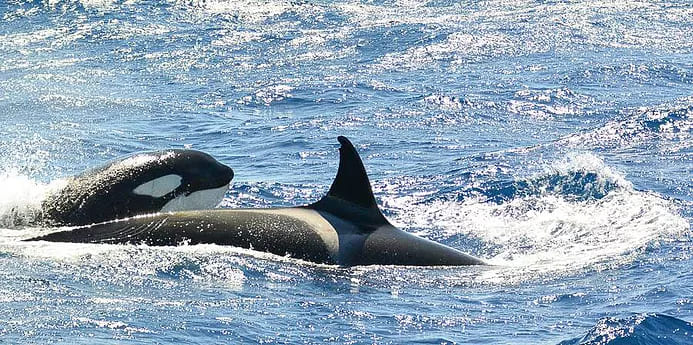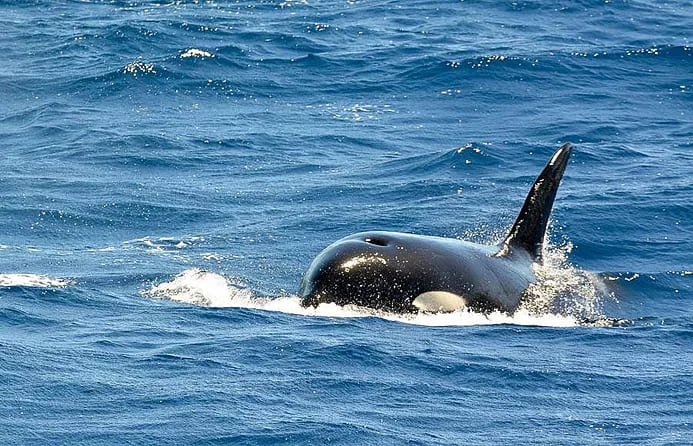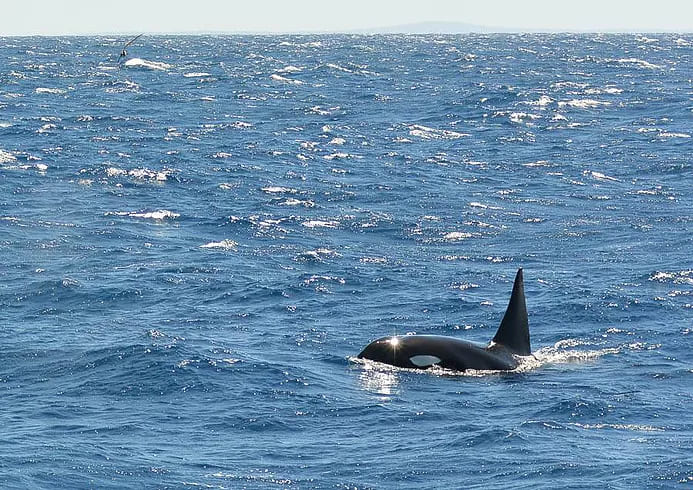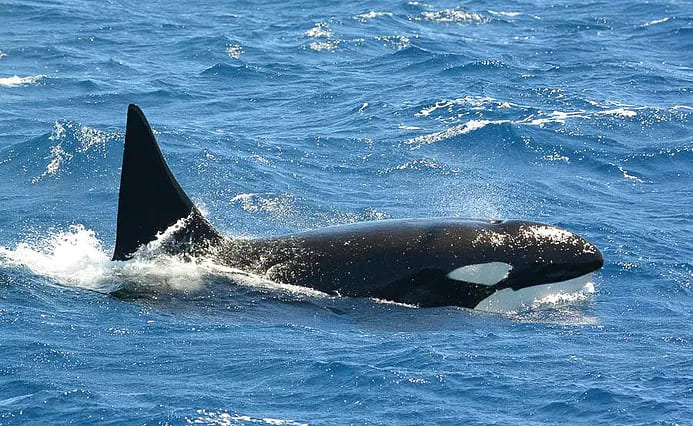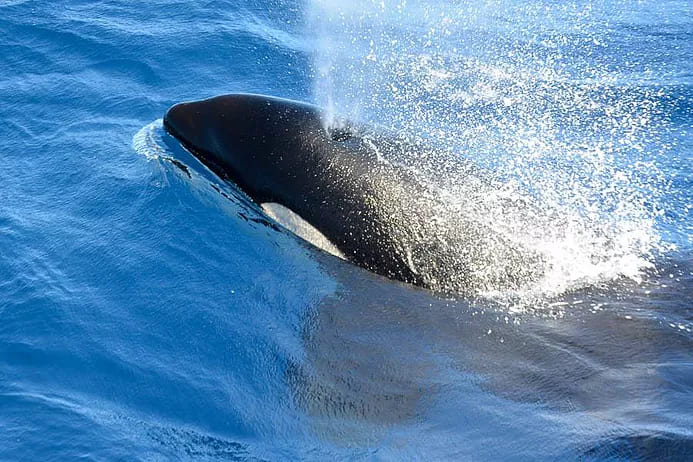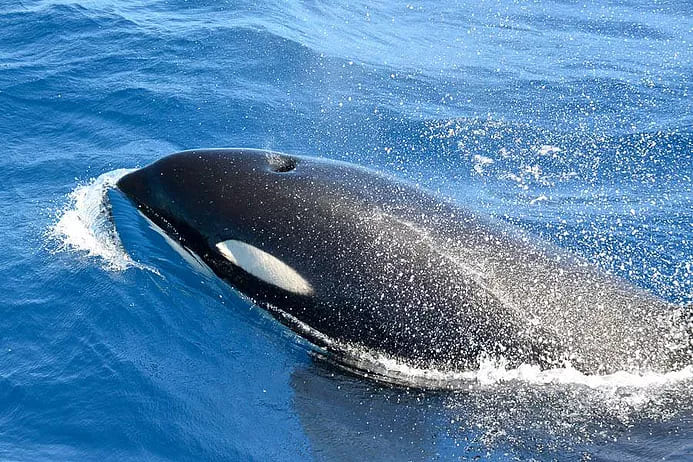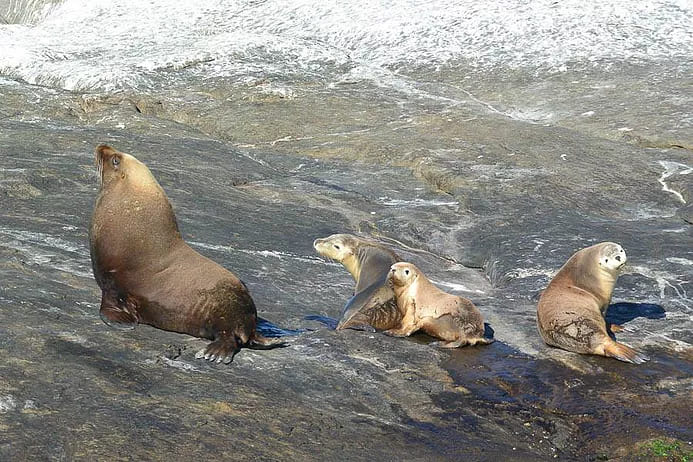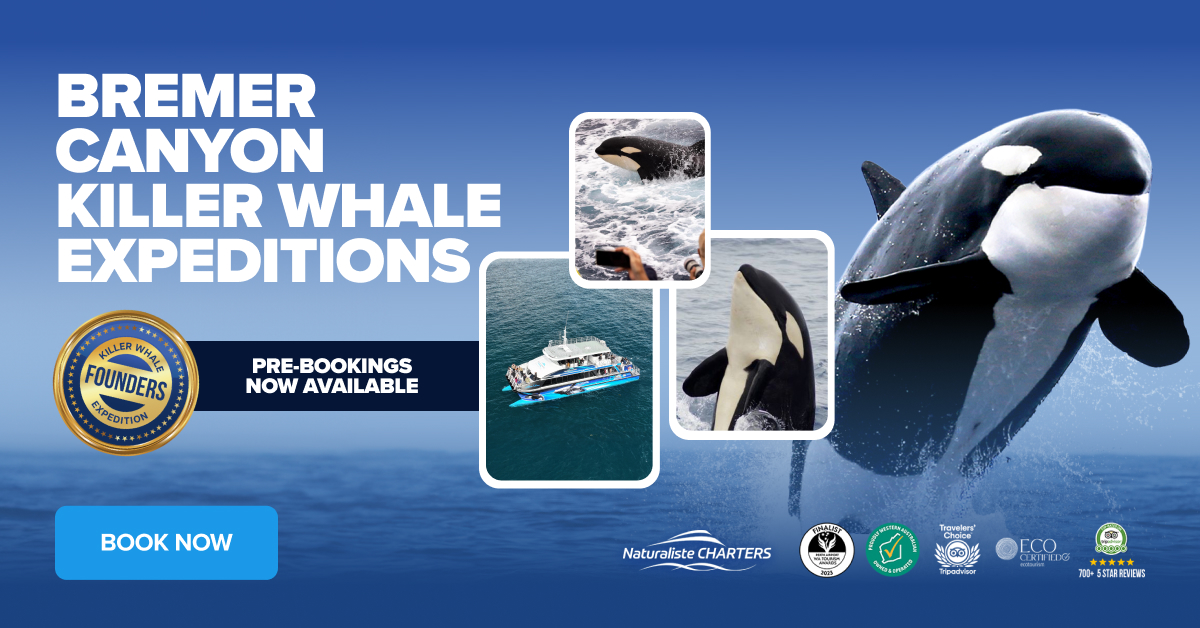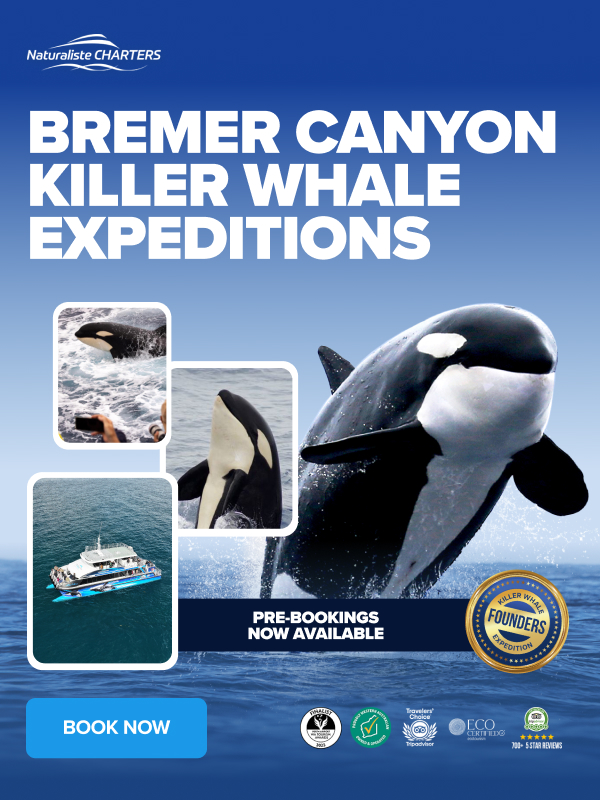The highlight of today’s expedition was sighting a new addition to the Bremer Canyon killer whale population.
We had to slog through some messy seas on our commute to the blue office. We paused as we dropped into deep water to watch a large sunfish warming up on the surface. As it moved off in deceptively ungainly style, we began our search of the choppy blue seas. It wasn’t long before our efforts were rewarded with a line of blows spouting from the surface ahead.
As we approached, we could see familiar fins that included Cookie, El Notcho and their band as well as another large male. As we approached, the pod changed course and made a beeline for our boat. Surfing the swells, they headed in our direction, skimming just below the surface, turning on their sides to have a good look at the watchers on deck. From all points of the compass, they surged in, dived under our vessel then surfaced again on the opposite side. Excited expeditioners staggered from port to starboard, laughing at their own efforts to keep up with the movements of the graceful orca as they did so.
The pod moved away, but were content to remain close by, keeping us on our toes occasionally by diving for a few minutes and then surfacing somewhere different. They headed into the short sharp swells several times, and we hung on and deterinedly followed. Expeditioners on the bow, determined not to miss a second of orca time, enjoyed the blue roller coaster ride with the occasional dash of sea spray thrown in. To those that caught the one swell our skipper couldn’t soften for you, his name is Jamie if you are talking to the boss… 😉
A shout went up as a shark was spotted. A beautiful oceanic blue shark glided just below the surface, it’s sleek, streamlined body clearly outlined in the clear blue water. Blue sharks are, as you can probably guess, are a beautiful blue colour. They have a sleek, streamlined body and pointed snout.
They feed on small bony fish and cepalopods such as squids, but are also scavengers. We often see them feeding on the fleshy remains of other animals in the waters of the canyon. Onone memorable occasion we saw several brave blues chasing a killer whale with a mouthful of meat. Blue sharks have serrated teeth, making it easier to chew through large chunks of flesh, such as a dead whale body. They are a pelagic species, meaning they are constantly on the move through the water, swimming fairly close to the surface and feeding in deeper water.
We moved to investigate another pod of killer whales we had been keeping our eye on in the distance. The pod surfed the steep blue swells around us, providing some spectacular sightings. They did however keep their distance. It wasn’t long before we could see why. A tiny body surfaced in their midst. The very young calf surfaced again with the distinclive flop of a youngster yet to master te graceful arcs of its mother. As well as it’s size, the yellow colouration of it’s markings that in adults are ususally white have a deep orange/yellow colour, and vertical folds in the skin of it’s flanks indicated this calf was a neonate or newborn.
When calves are born, they have folds in their skin, referred to as foetal folds. These folds are a result of being curled in their mothers uterus, and last for approximately one week. Foetal lines, white lines resulting from the folds, develop and will remain until approximately the third month. Their white markings have an orange/yellow colour that fades gradually as the blubber layer becomes thicker, and capillaries beneath the skin no longer show through.
We left the small addition to the killer whale population of the Bremer Canyon in peace, enjoying the feeling of hope for the future a new baby a newborn baby brings.
Until tomorrow,
The Bremer Canyon Crew

